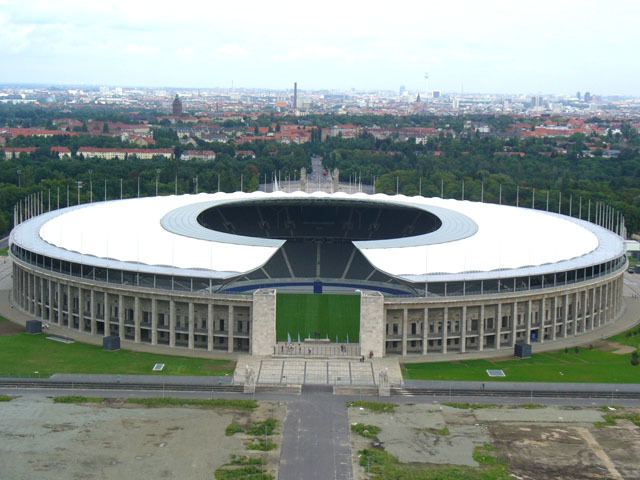Country Germany Time zone CET/CEST (UTC+1/+2) Dialling code 030 | Founded 2001 Area 64.72 km² | |
 | ||
Postal codes 10585, 10587, 10589, 10623, 10625, 10627, 10629, 10707, 10709, 10711, 10713, 10715, 10717, 10719, 10777, 13627, 14050, 14052, 14053, 14055, 14057, 14059, 14193, 14197, 14199 Points of interest Charlottenburg Palace, Berlin Zoologischer Garten rai, Deutsche Oper Berlin, Kaiser Wilhelm Memorial, Scharf‑Gerstenberg Collection Colleges and Universities Technical University of Berlin, Berlin University of the Arts, ESCP Europe, bbw University of Applie, SRH University Berlin | ||
Charlottenburg-Wilmersdorf is the fourth borough of Berlin, formed in an administrative reform with effect from 1 January 2001, by merging the former boroughs of Charlottenburg and Wilmersdorf.
Contents
- Map of Charlottenburg Wilmersdorf Berlin Germany
- Overview
- Demographics
- Subdivision
- Politics
- Twin towns Sister cities
- Economy
- Education
- Weekend education
- References
Map of Charlottenburg-Wilmersdorf, Berlin, Germany
Overview
Charlottenburg-Wilmersdorf covers the western city centre of Berlin and the adjacent affluent suburbs. It borders on the Mitte borough in the east, on Tempelhof-Schöneberg in the southeast, Steglitz-Zehlendorf in the south, Spandau in the west and on Reinickendorf in the north. The district includes the inner city localities of Charlottenburg, Wilmersdorf and Halensee.
After World War II and the city's division by the Berlin Wall, the area around Kurfürstendamm and Bahnhof Zoo was the centre of former West Berlin, with the Kaiser Wilhelm Memorial Church as its landmark. The Berlin Institute of Technology (Technische Universität Berlin), the Berlin University of the Arts (Universität der Künste), the Federal Institute for Risk Assessment (Bundesinstitut für Risikobewertung), the Deutsche Oper Berlin as well as Charlottenburg Palace and the Olympic Stadium are also located in Charlottenburg-Wilmersdorf.
Demographics
As of 2012, the borough had a population of 326,354, of whom about 110,000 (34%) were of non-German origin. The largest ethnic minorities were Turks at 4%; Poles at 3.5%; Arabs, former Yugoslavians and Afro-Germans at 2.5% each; Russians at 1.5%; and Ukrainians and Iranians at 1.0% each.
Subdivision
Charlottenburg-Wilmersdorf is divided into seven localities:
The localities of Schmargendorf and Grunewald were part of the former Wilmersdorf borough until 2001. By resolution of 30 September 2004, the localities of Westend and Charlottenburg-Nord were created on the territory of the former Charlottenburg borough, like Halensee on the territory of the former Wilmersdorf borough.
Politics
Current allocation of seats in the borough's parliamentary body (Bezirksverordnetenversammlung) as of the 2011 Berlin state election:
In July 2012 one former Left MP joined the SPD parliamentary group.
Twin towns — Sister cities
The borough Charlottenburg-Wilmersdorf of Berlin is twinned with:
Economy
The borough's economy largely depends on retail trade, mainly in the City West area along Kurfürstendamm, Breitscheidplatz and Tauentzienstraße, with supra-local importance.
Air Berlin has its headquarters in Building 2 of the Airport Bureau Center in Charlottenburg-Nord. As of 2006 Air Berlin employed 1,200 employees at its headquarters. Germania has its headquarters in Charlottenburg-Nord.
Education
Comenius-Schule, a primary school, is in Wilmersdorf.
Halensee-Grundschule, a primary school, is in Halensee.
Weekend education
The Japanische Ergänzungsschule in Berlin e.V. (ベルリン日本語補習授業校 Berurin Nihongo Hoshū Jugyō Kō), a weekend Japanese supplementary school, is held at Halensee-Grundschule.
Zentrale Schule für Japanisch Berlin e.V. (共益法人ベルリン中央学園補習授業校 Kyōeki Hōjin Berurin Chūō Gakuen Hoshū Jugyō Kō), another weekend Japanese supplementary school, is held at the Comenius-Schule - Established April 1997.
